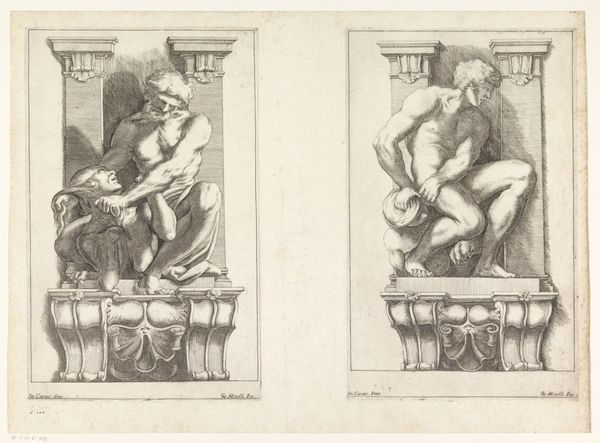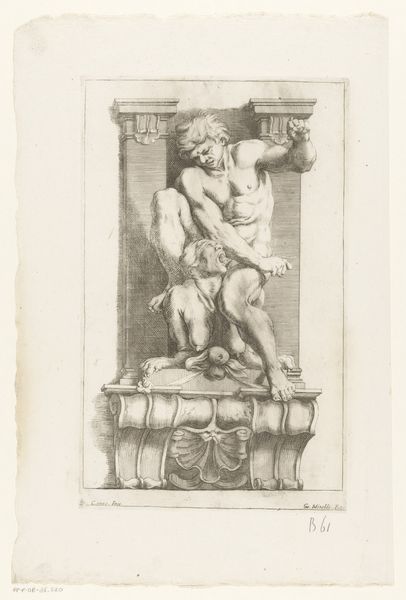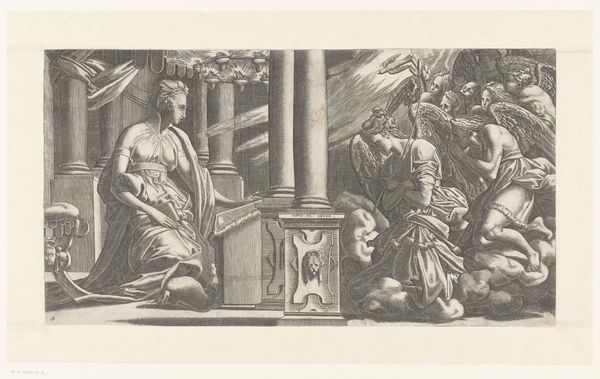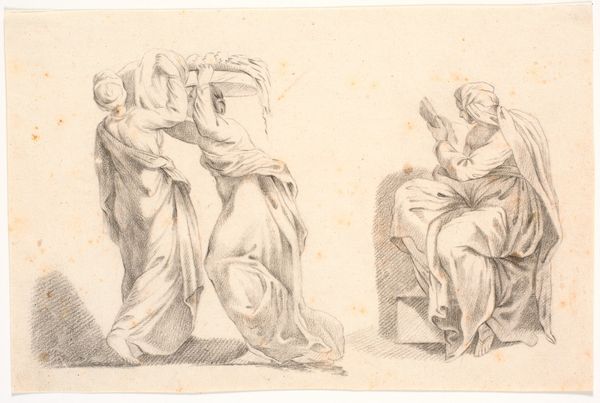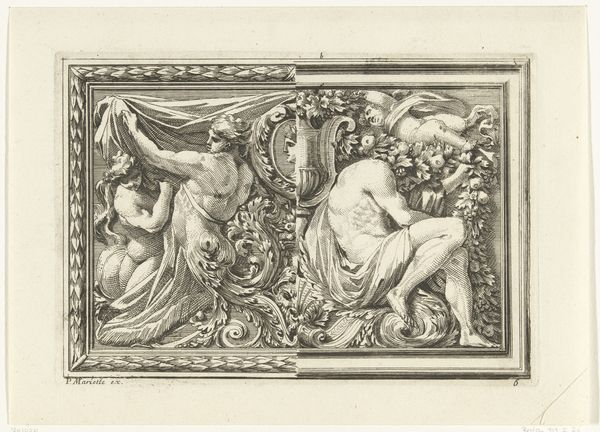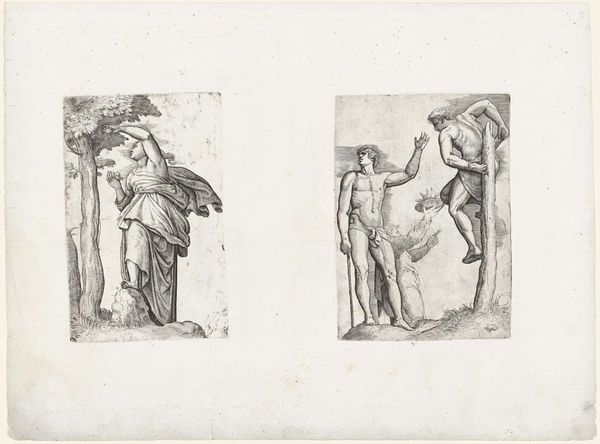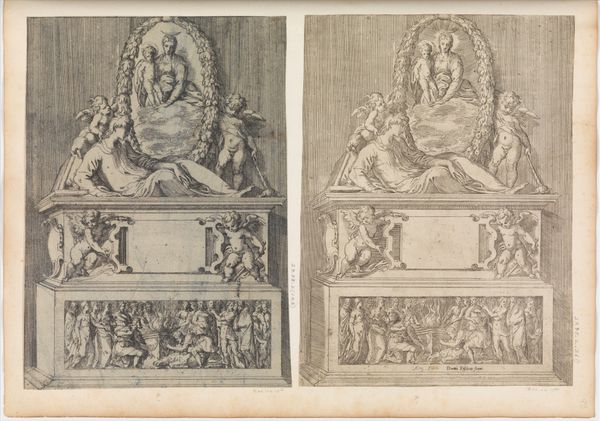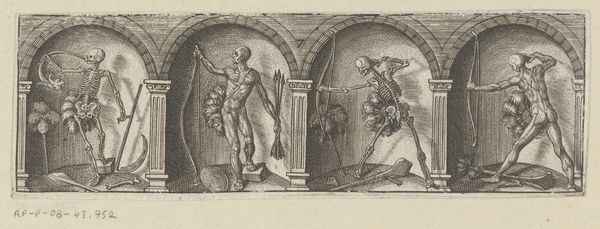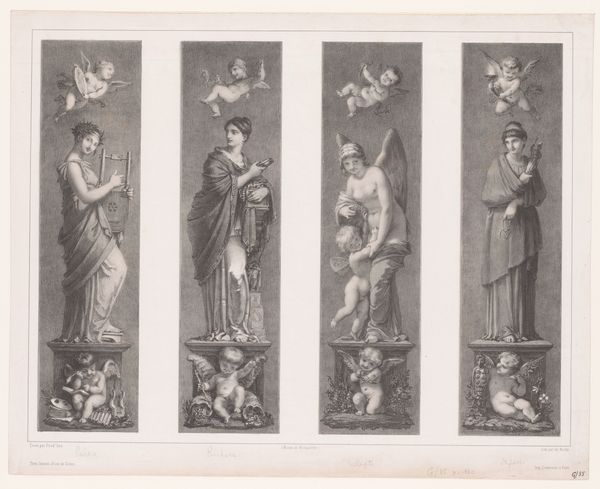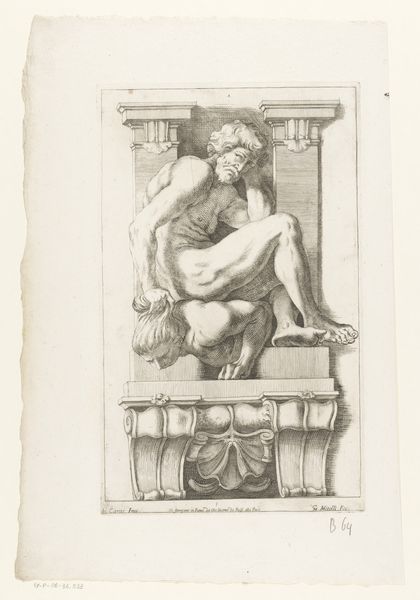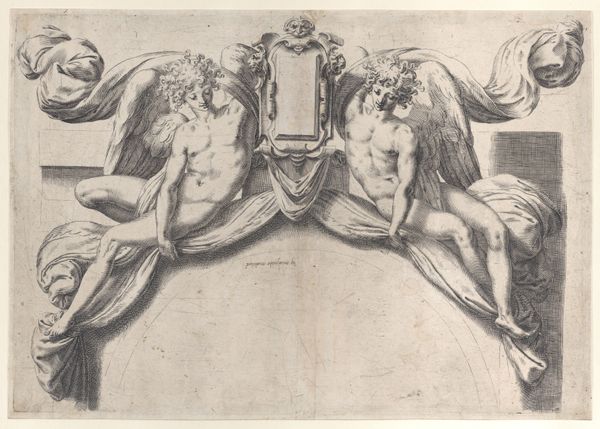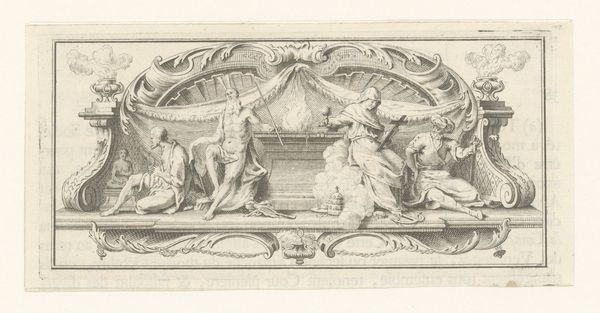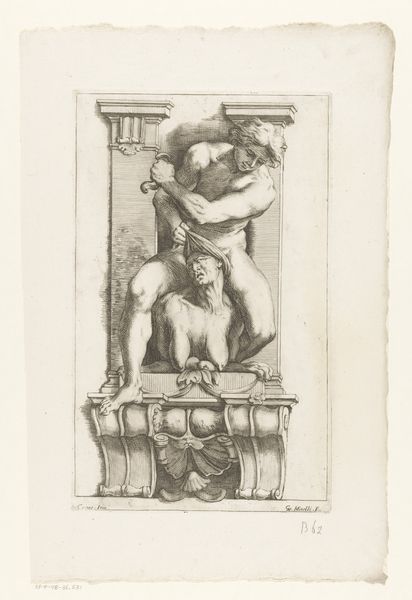
print, engraving
#
baroque
# print
#
figuration
#
history-painting
#
italian-renaissance
#
engraving
Dimensions: height 337 mm, width 210 mm, height 336 mm, width 210 mm, height 390 mm, width 522 mm
Copyright: Rijks Museum: Open Domain
Curator: Welcome. Here at the Rijksmuseum, we're standing before "Man onderwerpt een harpij" created in 1663 by Giuseppe Maria Mitelli. It's a fascinating engraving showcasing Mitelli's mastery of the Italian Baroque style. What strikes you initially about this piece? Editor: Well, there's immediately a clear power dynamic at play. Both engravings depict men forcefully positioned atop subjugated figures; one restrains, the other seems to crush. It evokes feelings of dominance and oppression, but the mythological elements invite closer interrogation of who has the legitimate right to dominate. Curator: Exactly. Mitelli was working within a visual culture that regularly depicted power through allegory and mythology. The image presents a classical education while commenting on contemporary life. Note how the architectural elements, the columns, the ornate base – create a stage. Editor: I'm immediately questioning the nature of power here. The male figures aren't idealized, they have furrowed brows, indicating discomfort, as though domination is a burden as well as an assertion of authority. And is that burden not even greater when it requires them to quite literally stand on another person? Is the classical allegory undermining the glorification of power? Curator: A crucial consideration. Baroque art often employed dynamic compositions and dramatic contrasts, here used to portray moments of intense emotional and physical tension. And Mitelli's choice of engraving allows for incredible detail, emphasizing musculature and the grimaces of the figures. These engravings were widely circulated and consumed, offering insight into 17th-century attitudes towards the world around them. Editor: When viewing from today’s sensibilities, such imagery feels highly problematic, right? I wonder about how such representations perpetuated power structures that privileged men through their sheer ability to subjugate those considered beneath them, particularly given the work’s distribution within 17th century society and art spheres. How were women involved in the visual art movements, as artists and viewers, to change this imagery? Curator: Your point is critical; examining the social context forces us to interrogate the perpetuation of power dynamics and the systems that reinforce them. Mitelli's print acts as both artifact and tool, revealing the aesthetic sensibilities and biases of its time. Editor: The composition allows us to examine not just who dominated, but also how it impacts gendered readings of power and their reproduction. What if, in these times, Mitelli can show us how we participate in dominance today and instead build systems of community care and sustainability? Curator: Indeed, by situating artworks like Mitelli’s within these broader dialogues, we confront historical inequities, paving the way for more equitable engagements with art in the future. Thank you for providing us with that lens of historical and social interpretation.
Comments
No comments
Be the first to comment and join the conversation on the ultimate creative platform.
